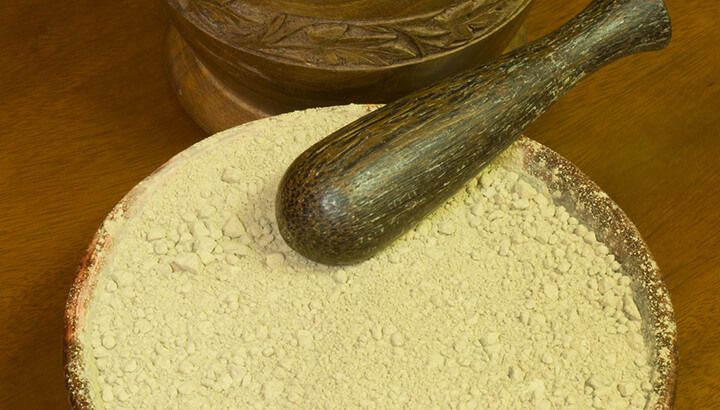
Our vision is just one of those things we take for granted, until that awful moment when we start to realize it isn’t as good as it used to be. The human eye is an amazingly intricate and beautiful organ, culminating millions of years of evolution to provide something that can sense tiny variations in light and project them to the brain as real-time ultra-HD images. No fancy-schmancy TV could ever hope to compete with that!
But with something so intricate and delicately balanced, there’s a lot that can go wrong. Depending on a combination of your genetics and the environment you live in, your vision could begin to decline at any point in your life. After that, it’s regular trips to the optician and countless pairs of prescription glasses or contact lenses. Something you’d definitely want to avoid, if you could.
But what if there was a way to give your eyes a much-needed vacation and improve your vision in the process? While many optometrists would scoff at the idea of simple, natural remedies for improving eyesight and halting the decline of your vision, others would disagree. There’s plenty of people out there that can attest, first hand, to the vision-supporting powers of simple daily eye-friendly routines. Here’s a selection of the more popular eyesight remedies.
Healing eyewash

Ayurvedic practitioners place great faith in Triphala churna, the powdered form of a medicinal herb used for millennia in India and parts of Asia. In the literature, Triphala shows considerable promise as a general-purpose therapeutic herb, possessing antioxidant, anti-inflammatory, analgesic, antibacterial and anticarcinogenic properties.
Considering its many therapeutic abilities, it’s perhaps no wonder that Ayurvedic practitioners often recommend a Triphala eyewash, otherwise known as a tridoshic eyewash. Rather than washing out clogged or tired eyes with straight water, soak your Triphala churna overnight in a bowl with filtered water. In the morning, strain the liquid through a cheesecloth to remove any solids, then gently wash your eyes with it. This can be repeated twice a day to help relieve stress and tension in the eyes.
Eye exercises
The history of using eye exercises for improving vision and ocular health is a long and controversial one. As early as the 1940s, eye exercises were being studied by researchers and employed by cutting-edge optometrists to correct visual impairments. This 1944 study, for example, explains how repetition is a fundamental law of biology, implying that by repeatedly performing structured eye exercises the eye can learn to improve its vision and maintain a health musculature. Jumping forward to the 1970s, scientists were still interested in this fringe practice, with many stating that eye exercises were an effective way to improve “reading performance.”
Today, the controversy continues, with some studies showing positive effects of these exercises on ocular motility disorders, learning disabilities, visual field defects and more. Others, however, have been unable to find any significant improvements from the practice.
To me, eye exercises do make a lot of sense. Eyes use an intricate network of muscles and nerves to expand, contract and move around within their sockets, so why wouldn’t a series of carefully controlled exercises help to improve their mobility and help them stay on top of their game? This is especially true when you think about how much time we spend staring at the same spot all day — at computers, books, TVs or at the road in front of us.
If you’re keen to try out eye exercises for better vision, here’s a few basic starting points.
Exercise 1: The pencil method
- Hold a pencil or pen at arm’s length and force both eyes to focus on the tip of it.
- Slowly bring the pencil closer to your nose, until it’s touching.
- Return the pencil slowly back to arm’s length, keeping your eyes focused on it the whole time. Repeat 10 times, or until your eyes start to get tired.
Exercise 2: The blinking method
- Blink the eyes 20 to 30 times rapidly.
- After you reach your goal, close your eyes and let them rest for 30 seconds.
- Repeat twice daily.
Exercise 3: The eye roll method
- Slowly roll your eyes clockwise along the top of your vision.
- Slowly roll your eyes back in a counterclockwise direction along the bottom of your vision.
- Blink, then repeat five times. Once a day is usually sufficient for this exercise.
There’s plenty of other eye exercise techniques that, based on anecdotal evidence at least, are a great way to improve your vision. My personal favorite is simply looking out the window at least every 20 minutes, especially if I’m sitting in front of a computer. This forces the eyes to re-focus and helps alleviate pent-up tension from looking at one spot too long.
Nutrients for better vision

While the above remedies are certainly effective ways to ensure better vision, easily the most important thing you’ll ever do for your eyes is to eat nutrient-dense foods.
Getting a wide range of colorful fruits and veggies, with a particular emphasis on dark leafy greens and a good mix of herbs and spices, will provide the nutritional foundation for great eye health. You’ve probably also heard your mom say that carrots help you see in the dark — it turns out this old wive’s tale is actually not too far off the mark! Beta carotene, the antioxidant that gives carrots and other orange vegetables their color, is an important nutrient for supporting good vision and healthy eyes.
Next, getting plenty of saturated fats from sources like cold-pressed coconut oil, grass-fed butter and avocados is important for maintaining healthy eyes and reducing the detrimental effect of aging. Finally, ensuring that you get lots of omega-3 fatty acids every day is vitally important to maintaining good vision. Foods high in omega-3s include cold water fatty fish like wild salmon and sardines, and of course fermented cod liver oil.
— Liivi Hess

